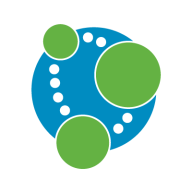

MongoDB and Neo4j Graph Database compete in the data management space, each excelling in different areas. MongoDB has the upper hand in handling unstructured data with its document-based model, while Neo4j excels in managing complex, interconnected datasets.
Features: MongoDB offers JSON-like documents, a flexible schema model, and horizontal scalability, which suit varied datasets. Neo4j provides native graph processing, Cypher query language, and real-time data insights essential for graph operations.
Room for Improvement: MongoDB could improve in graph data processing capabilities and more advanced relational query support. Neo4j may enhance its handling of unstructured data and document-based modeling and reduce complexity for simpler deployment scenarios.
Ease of Deployment and Customer Service: MongoDB offers wide cloud support and extensive community resources, making it easy to deploy in diverse environments. Neo4j focuses on providing a seamless graph experience with dedicated deployment tools and specialized support for graph-centric projects.
Pricing and ROI: MongoDB provides a cost-effective pay-as-you-go model, offering substantial ROI for scalable applications. Neo4j's costs are justified by its specialized features and enterprise support, particularly for projects relying heavily on graph processing.

MongoDB is a flexible and scalable NoSQL database solution that efficiently handles both structured and unstructured data. It is known for its ease of use, JSON capabilities, and efficient data handling, making it ideal for developer-friendly environments.
MongoDB stands out with features like sharding, geospatial indexing, and its open-source nature. Users find it fast and appreciate its seamless integration into different applications. Despite being powerful, it remains straightforward to set up and use, bolstered by a clustering and aggregation framework that enhances its functionality. While generally appreciated for its cost-effectiveness and broad application compatibility, there is room for improvement in security, enterprise integration, and the creation of more robust training and documentation resources. Enhancing performance and adding support for traditional relational database concepts could also prove beneficial.
What are MongoDB's most important features?MongoDB finds widespread application across industries like healthcare, logistics, and telecommunications. It efficiently powers IoT platforms, data analytics, and document management systems. Its schema flexibility and JSON storage capabilities make it ideal for real-time processing and multi-server databases, essential for handling large-scale data volumes in modern applications.
Neo4j is the graph database solution allowing the analysis of complex relationships and patterns in data, leading to better decision-making and improved business processes. The graph database offers easy data integration from multiple sources, providing a more comprehensive view.
The most valuable aspect of a graph database is its performance and response time, as it does not use the join function and only has nodes and raw data. Overall, Neo4j, as a global first-ranking solution, has helped organizations become more efficient and effective in data analysis and decision-making processes.
We monitor all NoSQL Databases reviews to prevent fraudulent reviews and keep review quality high. We do not post reviews by company employees or direct competitors. We validate each review for authenticity via cross-reference with LinkedIn, and personal follow-up with the reviewer when necessary.